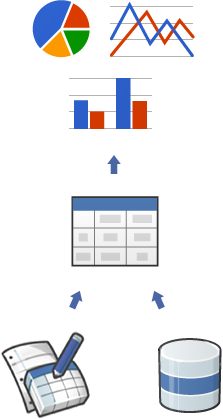
Google Charts provides a perfect way to visualize data on your website. From simple line charts to complex hierarchical tree maps, the chart gallery provides a large number of ready-to-use chart types.
The most common way to use Google Charts is with simple JavaScript that you embed in your web page. You load some Google Chart libraries, list the data to be charted, select options to customize your chart, and finally create a chart object with an id that you choose. Then, later in the web page, you create a <div> with that id to display the Google Chart.
That's all you need to get started.
Charts are exposed as JavaScript classes, and Google Charts provides many chart types for you to use. The default appearance will usually be all you need, and you can always customize a chart to fit the look and feel of your website. Charts are highly interactive and expose events that let you connect them to create complex dashboards or other experiences integrated with your webpage. Charts are rendered using HTML5/SVG technology to provide cross-browser compatibility (including VML for older IE versions) and cross platform portability to iPhones, iPads, and Android. Your users will never have to mess with plugins or any software. If they have a web browser, they can see your charts.
All chart types are populated with data using the DataTable class, making it easy to switch between chart types as you experiment to find the ideal appearance. The DataTable provides methods for sorting, modifying, and filtering data, and can be populated directly from your web page, a database, or any data provider supporting the Chart Tools Datasource protocol. (That protocol includes a SQL-like query language and is implemented by Google Spreadsheets, Google Fusion Tables and third party data providers such as SalesForce. You can even implement the protocol on your own website and become a data provider for other services.)
Ready to create your first chart? Visit the quickstart.
Our tools are constantly evolving to better address your needs; we depend on your feedback to help us prioritize which features to include. Join our discussion group.